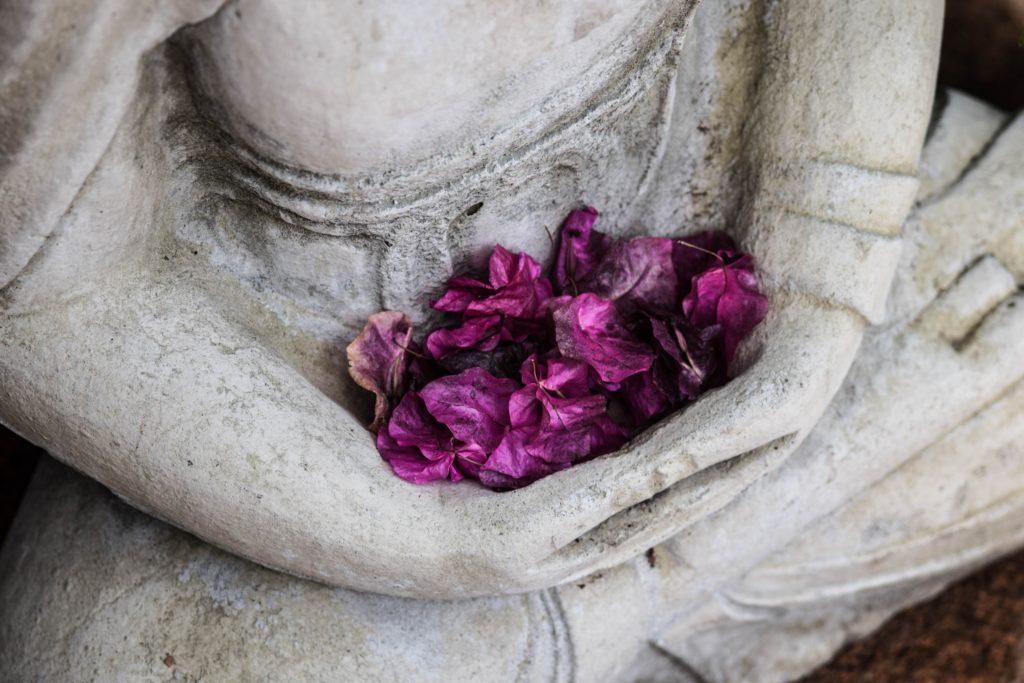
23 Sep Care But Don’t Care Too Much: Find the Space Between Effort and Ease
If you’re a parent or know someone who is a parent, you’ll know what I mean when I say that there’s no month on the calendar that can rival the energetic intensity of September. The shift from summer’s long warm days, backyard barbecues and lazy afternoons on the beach to the return of fixed school schedules and chilled mornings can be overwhelming to say the least. When my children were younger, it was the toughest time of year for me. No sooner than we returned from our annual family vacation there in the mailbox was the list of Back-To-School supplies that needed to be purchased, sports physicals to schedule, permission slips to sign and the calendar of Parent Nights to be attended. Just holding that packet of papers in my hand brought on some serious anxiety. I immediately felt like I was behind the eight-ball with a mile-long list of Things To Do. As school got underway it seemed that no matter how hard I tried with calendars, organizers, app reminders and notes on the refrigerator, there was never enough time for “me” and the things I know I wanted to do. I found myself exhausted before the year was even in full swing and I lived for the day that my son graduated because life would surely be much simpler. ‘As soon as the kids get older, there will be more than enough time for me,’ I said.
Fast forward to now with my son in his second year of college, no more children in grade school. I’m at the proverbial midlife stage where I’m supposed to be crushing the Bucket List of dreams. But with a busy practice growing by leaps and bounds, a calendar of speaking engagements, a household to run, finances to manage and my aging mom to check up on, I still find myself frustrated by a race against time.
It was only recently that I realized precisely what I’ve been doing wrong. It isn’t about having another app, another calendar, or even a personal assistant. It isn’t about the constant hunt for more time. It’s about re-learning the principle of Effort and Ease.
Sthira Sukham Asanam: The Space Between Effort and Ease
Ten years ago when I embarked on a path to become a certified yoga instructor I learned of a term ‘sthira-sukham-āsanam’ in a classic Indian text known as the Yoga Sutras. Written by the Indian sage Pantajali, one of eighteen Indian scholars in 3rd century BCE, the Yoga Sutras is one of the most important texts in the Hindu tradition and the foundation of all yoga practice. Literally translated, the term means that the ‘asana’ or body postures done in yoga practice should be ‘steady, stable, grounded and strong’ (sthira) and ‘comfortable’ (sukham). In other words, students should practice to make sure that the postures are done correctly but not worry so much that the posture and the effort become rigid, unstable, or painful.

My cohort was a collection of roughly 20 men and women studying to become certified yoga therapists and teachers. For one full year we gathered every Saturday and Sunday in 8-10 hour sessions, listening to carefully selected speakers, reviewing assigned readings, and learning how to design and teach classes. Gripped with anxiety, we stumbled our way through teaching each other in small groups. We wanted to position our arms at the precise angle, hold picture-ready postures for just the right amount of time and create perfect teaching plans to prove that we’d have something to offer after graduation. We asked questions — lots and lots of questions. Sometimes we questioned too much. Even worse, we wanted to be able to offer the tradition of yoga in the same way that our guru had so graciously offered it to us. In a word, we wanted to be perfect.
Ironically, in our quest for perfection we were doing way too much. We were stressing ourselves out — the opposite of every yoga principle — and it showed. Our teacher, the center owner and director, offered the simple teaching of Sthira Sukham Asanam from the Yoga Sutras. She pointed out that the Yoga Sutras were like a gentle hand, meant to provide guidance of the spiritual life that accompanies the physical practice of yoga. And she explained how our physical practice was also a metaphor for life. “Care, but don’t care too much. Find the space between effort and ease.” In other words, we didn’t need to learn more yoga. We needed to learn how to relax; we had to find that space between steady, focused concentrated effort and a gentle, relaxed place of ease.
Something To Think About
We live in a world that doesn’t stop. Breaking news is breaking all day, every day and there’s a subtle insinuation of irresponsibility if one doesn’t keep abreast and informed about the latest political upheaval or social media outrage. Text messaging increases our accessibility and shortens our attention; we are more connected — and distracted — than we can afford to be. We are obsessed with achievement and want metrics that prove our productivity, not only for ourselves but our children too. Along with basic school work we add in swimming classes, soccer tournaments, piano lessons and a whole host of extracurricular activities that comes at the price of being overextended and overbooked. Anxiety, depression, difficulty sleeping and a whole host of symptoms and illnesses have become our norm not because of circumstances beyond our control but because we’re simply doing too much. Many of us are either crippled with regret over the past or gripped by fear of the future. We have to ask ourselves if this is the way we really want to live.

Breaking the Cycle of ‘Doing’
The only way to change an outcome is to stop a behavior. Just as we learn how to do a thing, we can also learn how to stop doing. Letting go of the constant need to achieve, the need to produce and constantly working on goals and chasing dreams is key to cultivating a life that can be enjoyed and savored. For one hour, one day or even one whole weekend we can give ourselves permission to not only stop doing but to stop thinking about doing. We can put down our To-Do Lists and Want-To-Do Lists and clear our calendars of obligation and expectation. We can stop the never-ending cycle of working ourselves into states of sheer mental and physical exhaustion. As our bodies slow down, our minds will slow down too.
Here are a few ideas to break the cycle of doing and start incorporating more rest and rejuvenation in your life; ideas for finding that sweet spot between effort and ease.
- Inner Listening. Start listening to what your mind and body have been telling you. What are the simple things you enjoy doing most but just can’t find the time to do? Long walks? Bike riding? Gardening? Strolling through museums? Reading a good novel? Practice writing down the simplest things that bring you pleasure, joy, peace or relaxation and why. Example: “gardening helps me relax.”
- Affirm Your New Life. Old habits die hard. Pay attention to the nagging voice in the back of your mind that will resist this new behavior that you’re incorporating into your life. You may find yourself feeling a sense of ‘guilt’ or ‘fear of missing out.’ The moment either of those feelings creep in, affirm your new habit by speaking ‘I give myself permission to rest in this moment.’
- Create a Circle. No matter how far we evolve through technological advances, much of our behavior as humans will remain basic. We have a basic human need for things like love, belonging and inclusion. Having the support of people who value rest, joy, and a sense of purpose in life will help you sustain your new practice and develop strategies for managing your time and unexpected conflicts.
- Plan Baby Steps. A leading reason for falling back on old habits is leaping before learning. Baby steps are still steps and the slower we go, the more we allow ourselves to gain traction and the more likely we are to succeed. Our minds get a chance to adjust to a new way of being. Brainstorm a few ideas on how to begin your new lifestyle that values rest and recovery time. Think of one simple thing that you can implement in one small stretch of time. Example: is it possible to create an after work ritual that helps you transition from work to home? Perhaps you can plan to take 30 minutes to sit quietly and enjoy a cup of tea — no reading, no cell phone, no television. In other words, start simple, right now with the little things. Let’s set a plan for autumn wellness that we can take well into the New Year and the rest of our lives.
Subscribe to my newsletter to get Part II where we’ll explore how to execute a plan for putting your new lifestyle plan into practice, manage obstacles, measure success and more! Click HERE.

No Comments